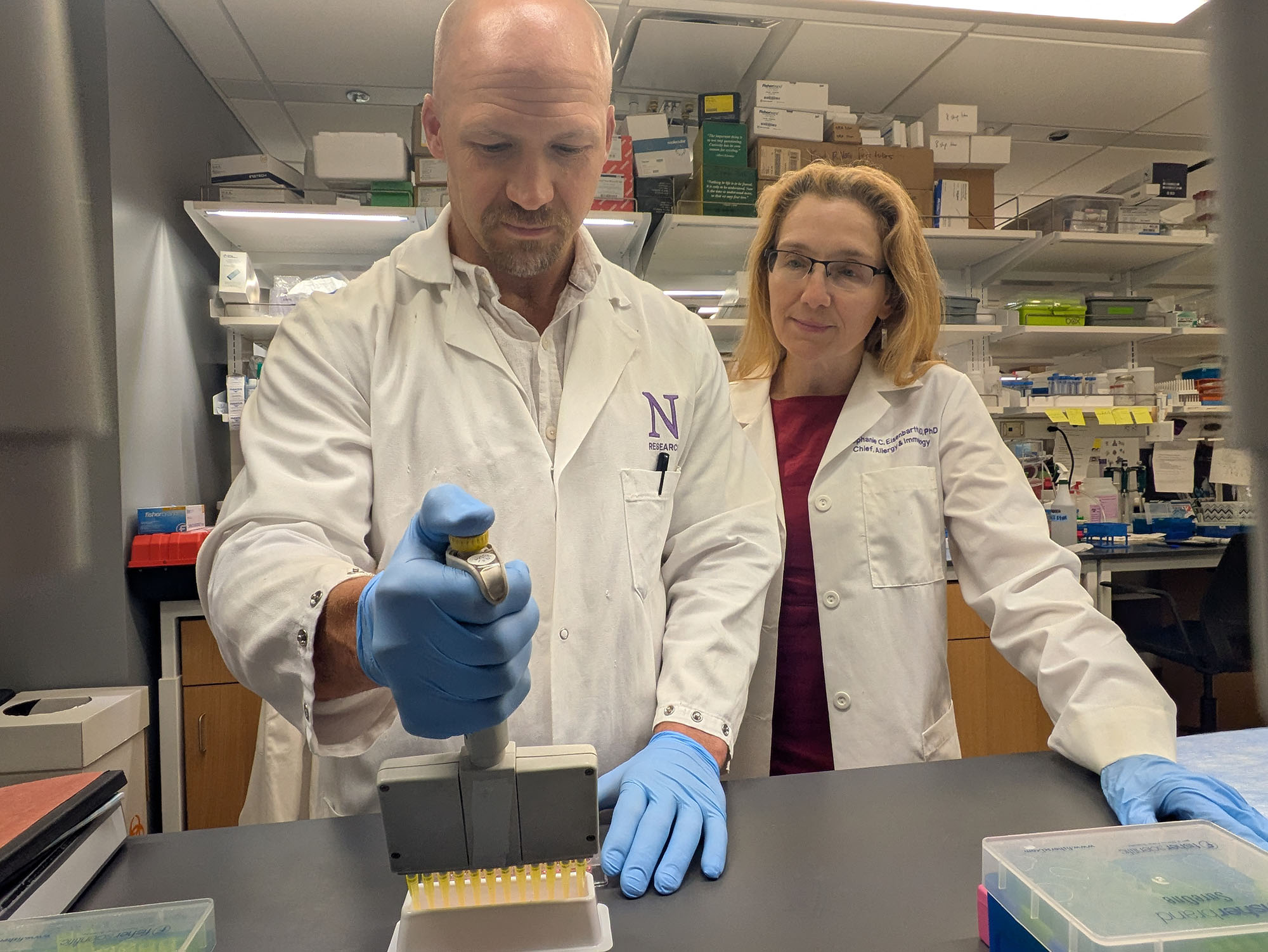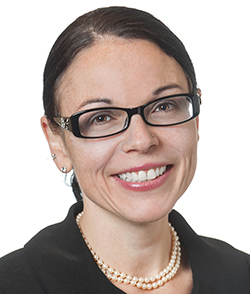
Traversing the healthcare system can be daunting for almost anyone. Add in the many obstacles that low-income uninsured populations face, and it becomes tremendously more difficult. But a new Northwestern Medicine study shows that guidance from trained navigators can help patients overcome healthcare inequities.
In a study published Feb. 25 in the American Journal of Public Health, community navigators worked with uninsured Spanish-speaking women in DuPage County to obtain timely follow-up care after an abnormal breast or cervical cancer screening result. Postponed diagnosis after an abnormal test can lead to less effective treatment and lower chances of survival.
Ninety-seven percent of the Spanish-speaking patients in the study were recent immigrants and two-thirds did not finish high school. They had significantly lower income, lower health literacy, less confidence self-managing health and more distrust of the healthcare system than English-speaking patients in DuPage. Though these barriers put Spanish-speaking women at a higher risk for stalled follow-up care, patients in the navigation study did not have longer follow-up times than their English-speaking counterparts.
The project is part of an ongoing series of studies focusing on patient navigation and barriers to care across a variety of populations in the Chicagoland area and Illinois. The work is led by Melissa Simon, MD, ’06 GME, George H. Gardner, MD, Professor of Clinical Gynecology at Northwestern University Feinberg School of Medicine.
Dr. Simon’s interest is not just academic: She experienced what it’s like to struggle for healthcare firsthand while growing up in a low-income family in Detroit.
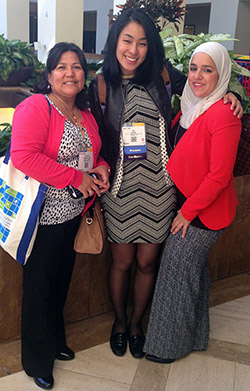
“Healthcare reform in the United States has opened the doors for many, but millions remain uninsured. Community navigator programs may have a key role to play in improving the health of the nation’s most vulnerable populations,” said Dr. Simon, who is an associate professor in Obstetrics and Gynecology, Preventive Medicine and Medical Social Sciences, and a member of the Robert H. Lurie Comprehensive Cancer Center of Northwestern University.
During the five-year study, six navigators worked with 477 uninsured women in DuPage County who had received abnormal breast or cervical screens. The navigators helped make appointments, provided interpreter services, referred patients to community services and gave emotional support.
The study’s investigators calculated each patient’s follow-up time, which is defined as the number of days between the abnormal breast or cervical screen and the diagnostic test that resolves the abnormal screening test into a cancer or non-cancer diagnosis, such as a colposcopy, diagnostic mammogram or breast biopsy. Obtaining a diagnosis more than 60 days after an abnormal screen was considered delayed follow-up.
Median follow-up time for women in the study was 29 days for breast screening abnormalities and 56.5 days for cervical screening abnormalities. The study found no differences in likelihood of delayed follow-up between Spanish-speaking patients working with navigators and English-speaking patients, despite barriers faced by the former group. DuPage patients who worked with navigators also had shorter follow-up times than patients living in similar suburban counties outside Chicago who did not receive help from navigators.
According to Dr. Simon, programs with a similar navigation model wouldn’t be difficult for other communities to implement, as long as they had funding. Navigators don’t need to be medical experts – they receive extensive training on the job. They don’t even need a degree. Rather, they understand the social conditions in the community and can build relationships with community resources. Most importantly, they feel comfortable advocating for patients and confident speaking to healthcare providers.
“There are a lot of people like this in a community. It could be the woman at the local beauty shop or someone in the ministry. They’re people who have it in their hearts that they want to do good for others,” Dr. Simon said. “You just have to tap into the talent.”
Partnering With Community Organizations to Combat Language Barriers and Poverty
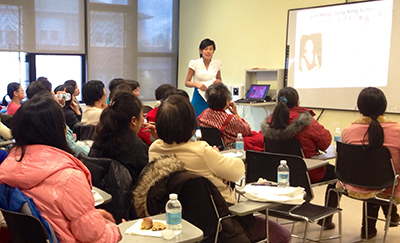
Getting healthcare is more difficult for patients like the ones in the DuPage study for a number of reasons.
“Language barriers can make follow-up appointment scheduling challenging, stifle choices in care providers, hinder doctor-patient interactions and reduce adherence to treatment,” said Dr. Simon.
Exacerbating the problem is the “suburbanization of poverty,” which refers to the national shift of poor populations from urban centers to suburbs that often lack developed public health safety nets, explained study co-investigator Joe Feinglass, PhD, research professor in Medicine-General Internal Medicine and Geriatrics and Preventive Medicine.
Suburban DuPage, the second-largest county in Illinois, doesn’t have resources such as a public hospital or expansive public transportation infrastructure. But it does have Access DuPage, a coalition of community organizations, local hospitals and the health department that provides primary care to uninsured residents.
Dr. Simon and her collaborators teamed up with Access DuPage to adapt a navigation model previously implemented by the National Cancer Institute’s Patient Navigation Research Program. Notably, they scaled the model across a community rather than limiting navigators to a specific hospital or clinic as previous studies had done.
“The old studies were very controlled and not performed in realistic settings,” Dr. Simon said. “Our navigators moved fluidly around a community going from one clinic to another, one hospital to the next.”
To make this possible, the program partnered with community organizations tied to health and social services.
“First we built strong relationships with organizations – we heard their needs so we could create a navigator intervention that’s flexible and realistic within that particular community setting,” Dr. Simon said.
Project coordinator and patient navigator Nadia Hajjar points out that community organizations can benefit from the navigator programs, not just the patients.
“Believe it or not, organizations – from the health department to the county building – don’t always know about each other’s resources,” Hajjar said. “Our program empowered women, but also helped bridge the gap between the medical team and neighboring organizations. People don’t realize what a team effort it takes to get a patient through something as simple as a mammogram.”
With the bonds that navigators build, the community resources can work together to provide help beyond healthcare, said Dr. Simon.
“It wasn’t just about getting a patient follow-up for an abnormal mammogram, it became about helping her find a job, get her electricity turned back on and figure out childcare,” she said. “Navigators have a multimodal impact – that’s an important part of this story.”
Navigators Open Doors in DuPage, Chinatown and Beyond
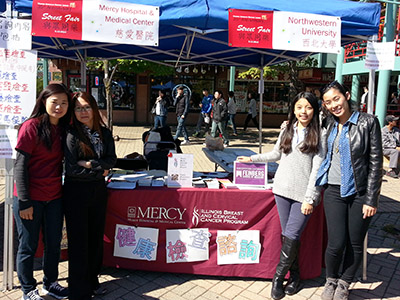
In addition to the DuPage County study, Dr. Simon also directs ongoing navigator projects in Chicago’s Chinatown and South Side neighborhoods, and downstate in rural Illinois.
“A common thread among these studies is the promise of community navigators as connectors and advocates for healthcare services delivery for culturally and linguistically isolated populations in communities with limited healthcare safety net systems,” she said.
Ivy Leung started working as a patient navigator in Chinatown in 2013, where she helps low-income, first-generation Chinese-American women get breast and cervical cancer screenings and follow-ups.
“I have seen women who knew they had lumps for a while, but they had no idea where to go,” Leung said. “Having someone to let them know that there are these types of services available has opened up so many doors, to screenings and all kinds of health education. Word of mouth helps, too, especially in the Chinese community where everyone is like a family. Our project is small, but we will have a big impact.”
In DuPage, Nadia Hajjar started working as a patient navigator in 2009 before becoming the project coordinator.
“Women come here from other countries, sometimes as refugees with no family or resources, and they need treatment,” Hajjar said. “As a navigator, you become their everything. I’m so proud to be part of this team and I hope we can do more projects – not just for cancer, but for diabetes, heart disease and all the other issues people are facing.”
Additional authors of the DuPage navigation study include, from Feinberg, Laura Tom and Narissa Nonsee, as well as Kara Murphy and Richard Endress, PhD, of Access DuPage.
The DuPage work was supported by National Institute on Minority Health and Health Disparities grant R24 MD001650. The Chinatown patient navigator project is supported by the National Cancer Institute R01 CA163830; the Chicago Lawn and West Side Patient Navigator project is supported by the Lynn Sage Breast Cancer Research Foundation; and the Illinois statewide navigator pilot projects are funded by the Illinois Department of Healthcare and Family Services.


